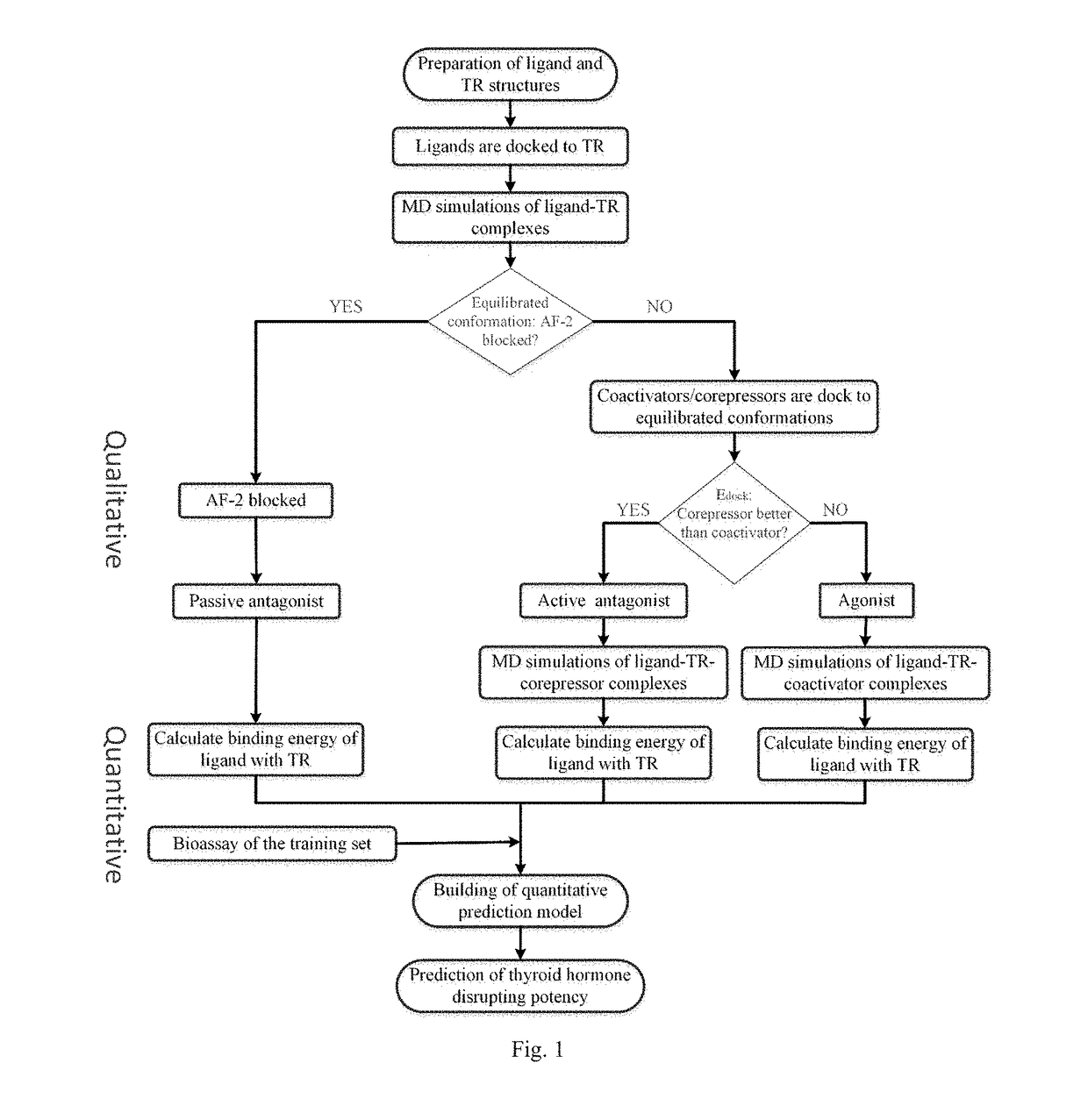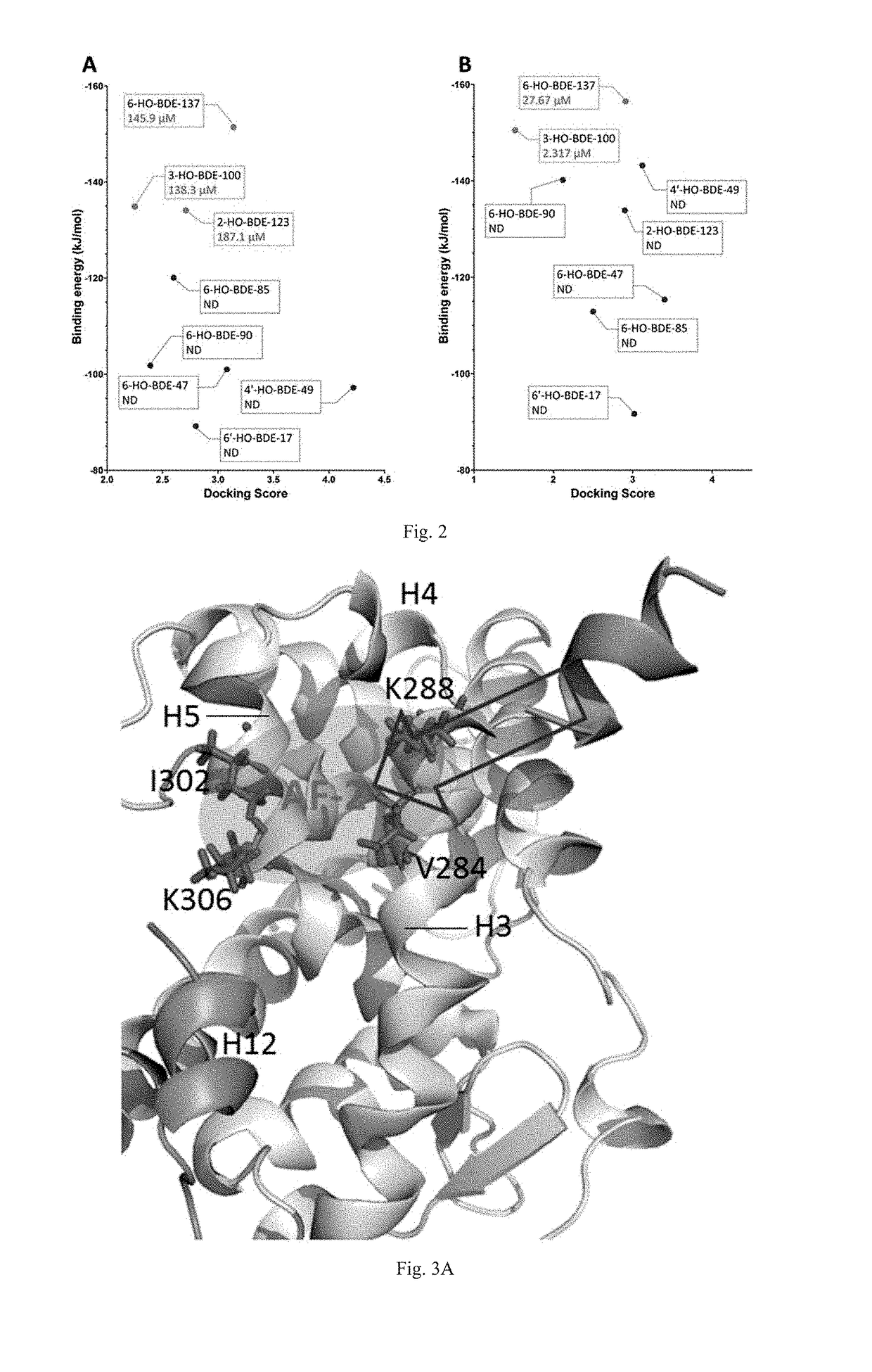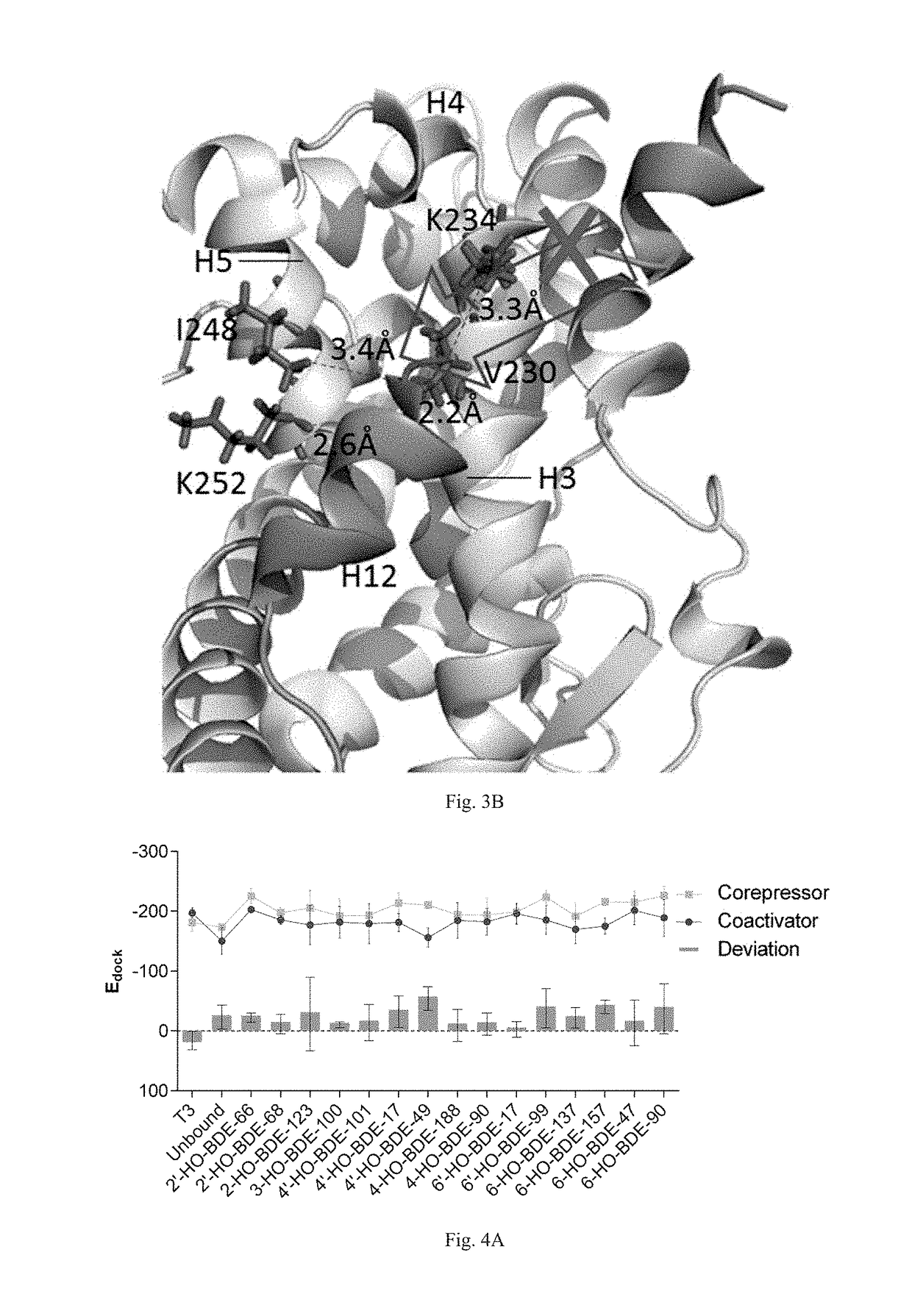Screening methods for thyroid hormone disruptors based on co-regulator involved simulations
a co-regulator and simulation technology, applied in the field of predictive toxicology, can solve the problems of inability to screen one by one, high cost, and time-consuming, and achieve the effects of less cost, more accurate potency prediction, and simple and sufficient prediction
- Summary
- Abstract
- Description
- Claims
- Application Information
AI Technical Summary
Benefits of technology
Problems solved by technology
Method used
Image
Examples
example 1
[0045]Apo structures of human TRα- and TRβ-LBD were built by homology modeling. Previously reported human TRα- (PDB code: 4LNX) and TRβ-LBD (PDB code: 1NQ0) were used as templates of the main bodies of TRα and TRβ, respectively, and apo structure of estrogen receptor (PDB code: 1A52) was used as the template of the loops between H11 and H12 of both receptors. Qualities of the constructed apo structures were further evaluated with Ramachandran plot generated by the Structure Analysis and Verification Server (SAVES, http: / / services.mbi.ucla.edu / SAVES / ).
[0046]Eight HO-PBDEs with T3 are selected as ligands for this example. Ligand structures are first optimized with MM2 (Molecular Mechanics, Allinger Force Field version 2), and then optimized using Powell gradient algorithm with the Tripos force field. Then the Surflex-Dock program interfaced with SYBYL 7.3 was used to dock the optimized ligands into the docking cavities of TR-LBDs. Docking scores of the ligands were calculated and the ...
example 2
[0050]Apo structures of rat TRα- and TRβ-LBD were constructed by homology modeling. Because no rat TR crystal structures was reported, human TRα- (PDB code: 4LNX) and TRβ-LBD (PDB code: 1NQ0) were used as templates of the main bodies of TRα and TRβ, respectively, and apo structure of estrogen receptor (PDB code: 1A52) was used as the template of the loops between H11 and H12 of both receptors. Qualities of the constructed apo structures were further evaluated with Ramachandran plot generated by the Structure Analysis and Verification Server (SAVES, http: / / services.mbi.ucla.edu / SAVES / ).
[0051]Sixteen HO-PBDEs with T3 are selected as ligands for this example. Ligand structures are first optimized with MM2 (Molecular Mechanics, Allinger Force Field version 2), and then optimized using Powell gradient algorithm with the Tripos force field. Then the Surflex-Dock program interfaced with SYBYL 7.3 was used to dock the optimized ligands into the docking cavities of TR-LBDs. Docking scores of...
PUM
 Login to View More
Login to View More Abstract
Description
Claims
Application Information
 Login to View More
Login to View More - R&D
- Intellectual Property
- Life Sciences
- Materials
- Tech Scout
- Unparalleled Data Quality
- Higher Quality Content
- 60% Fewer Hallucinations
Browse by: Latest US Patents, China's latest patents, Technical Efficacy Thesaurus, Application Domain, Technology Topic, Popular Technical Reports.
© 2025 PatSnap. All rights reserved.Legal|Privacy policy|Modern Slavery Act Transparency Statement|Sitemap|About US| Contact US: help@patsnap.com



